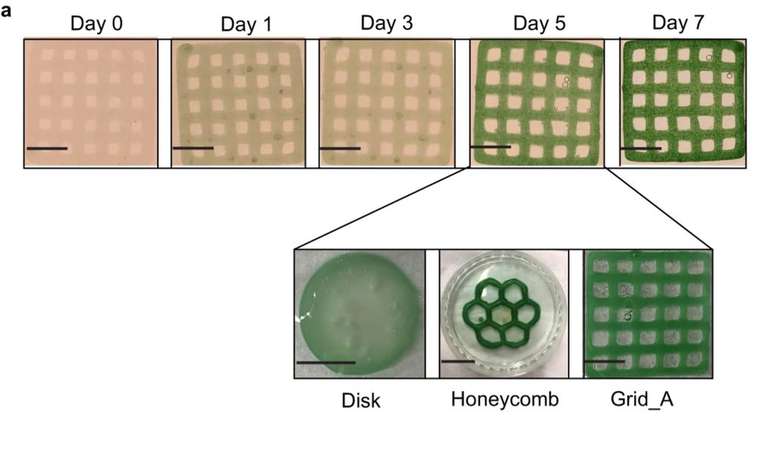After gene editing, cyanobacteria are used to create a living filter with the ability to purify dirty water from dyes or medicines
In most cases, cyanobacteria, also called cyanophyte algae or blue algae, are known to cause an unpleasant taste and odor in water. In some cases, photosynthetic bacteria can even release toxins, polluting the entire aquatic environment. By reversing this logic, researchers at the University of California at San Diego have developed a sort of filter composed of these genetically modified organisms, capable of cleaning and purifying water.
In an article published in the magazine Nature communicationsthe American authors describe that the use of cyanobacteria to clean water is possible only after gene editing, since, through this process, they allow them to release an enzyme that transforms various organic pollutants into benign molecules called laccases.
Thanks to laccase, this biofilter is able to purify water contaminated by antibiotics, other drugs and even dyes. In particular, the scientists tested the cleaning ability of the new material polluted waters from indigo carmine dye (blue) — widely used by the textile industry in dyeing jeans. After filtering, the liquid becomes colorless again.
How is the live cyanobacteria filter for water purification made?
To create the filter biomaterial, the researchers used alginate, a natural polymer derived from algae, as a basis. This material has been hydrated into a gel. Then genetically modified cyanobacteria were added to the recipe. Finally, all of this mass was fed into a 3D printer, which allowed for the creation of green, grid-shaped blocks.

In tests, this has been found to be the most effective way to filter polluted water, as it provides a good contact surface and allows the cyanobacteria, concentrated at the edges, access to nutrients and sunlight to stay alive.
Interestingly, the group has also developed a way to “kill” the filter when it’s no longer useful. This prevents a genetically modified bacterium from proliferating freely in aquatic environments, without adversaries. To end the structure, just add a molecule known as theophylline to the center.
“Living matter [filtrante] can act on the pollutant of interest and then a small molecule can be added to kill the bacteria,” summarizes Jon Pokorski, a professor of nanoengineering at UC San Diego and one of the authors of the invention, in a note. “In this way, we can avoid any concern about the presence of genetically modified bacteria in the environment,” he adds.
Further research for water depollution
In the future, the researchers’ idea is to develop a method of programmed death of cyanobacterial filters, which should occur without the need to add foreign molecules.
It is worth mentioning that, in addition to this research, several international teams are looking for alternative water purification solutions, such as Japan’s plastic-eating bacteria. Included, there is a Brazilian strategy that involves the use of sugar cane bagasse.
Source: Nature communications AND University of California at San Diego
Trends on Canaltech:
- What science says about the health impact of a cluttered home
- 😱🔥 COMBOS TO SEE | Galaxy S22 Ultra with Buds 2 costs less today
- 4 reasons NOT to use Spotify
- DC accidentally reveals the mystery about 2 Jokers in the current timeline
- Scientist creates a 2D wafer one atom thick
- 5 blockbuster movies that don’t adapt comics and talk to famous comics
Source: Terra
Rose James is a Gossipify movie and series reviewer known for her in-depth analysis and unique perspective on the latest releases. With a background in film studies, she provides engaging and informative reviews, and keeps readers up to date with industry trends and emerging talents.







